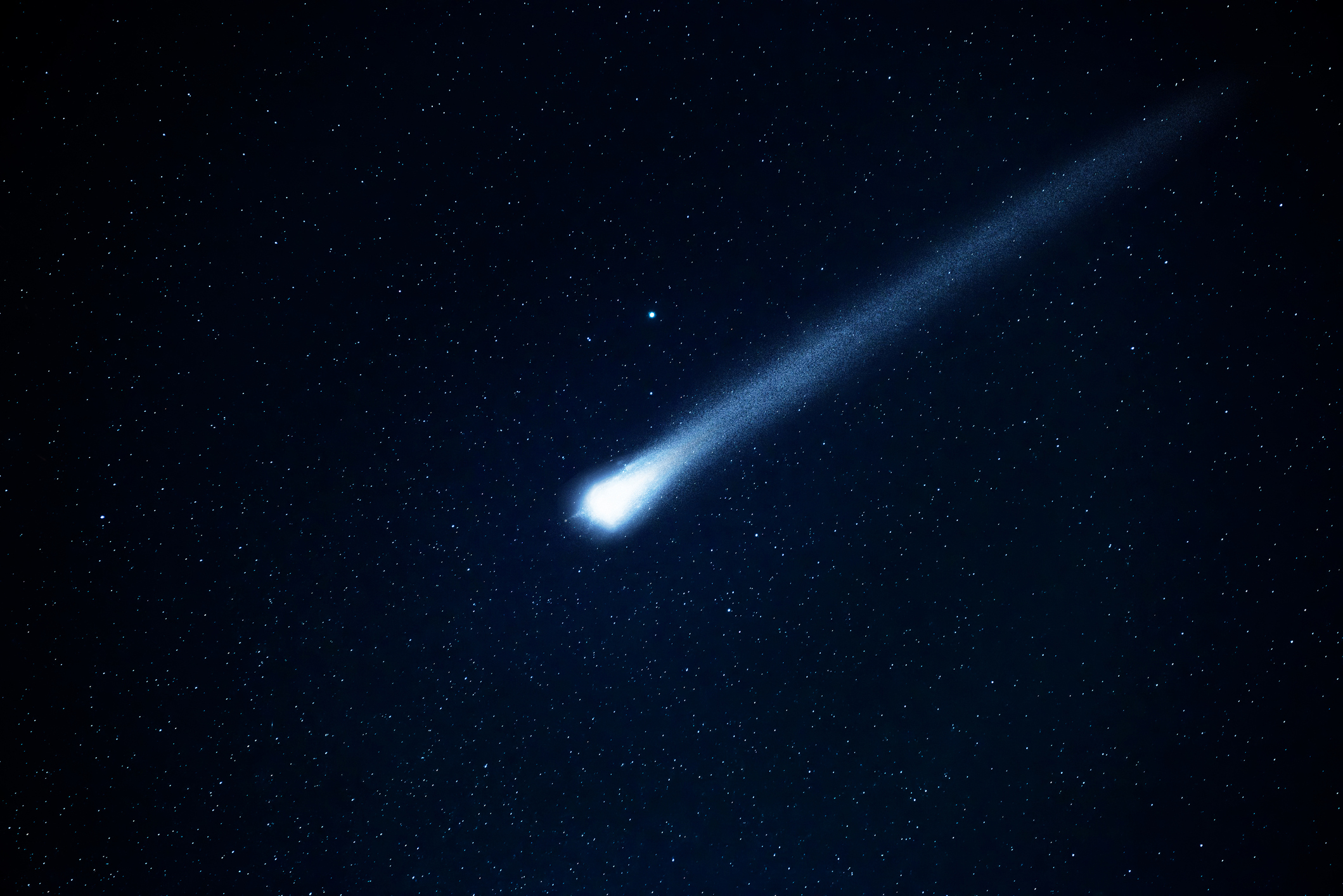The most under-loved planet in our solar system
For a celestial object so close by, we know surprisingly little about the planet next door


If you were to peer down on our solar system from a distance, you'd see three planets in the so-called "habitable zone" with a shot at harboring liquid water, and thus life. There's Earth, of course, the pale blue dot we call home. Then there's Mars, a small, cold planet with virtually no atmosphere, which is swarmed by robotic explorers and mapped in greater detail than our own ocean's floors. And then there's Venus, the second planet from the sun, and an enigma swathed in obscuring clouds, under-explored and unloved by modern solar system exploration.
Why haven't we explored Venus more? If it were a distant exoplanet, we'd coo about the fact that it's so similar to our home planet. We'd even experience something similar to Earth's gravity near Venus' surface! But since Venus is our closest neighbor, we know the planet as Earth's rebellious, toxic sibling. Still, some eerie similarities with Earth make Venus fascinating. Plus, how can you not love a planet that casually melts lead and crunches probes like soda cans, yet might harbor life in its acidic clouds?
"What gets me so excited about Venus is just how Earth-like it is," explains NASA researcher Glyn Collinson in an email. "It has similar gravity, a thick atmosphere, and orbits at a very similar distance to the Sun, [but] Venus is bone dry." Planetary scientist Lynn Carter, also with NASA, agrees: "Venus is a great counter-example and it's close enough that we can study it in detail."
The Week
Escape your echo chamber. Get the facts behind the news, plus analysis from multiple perspectives.

Sign up for The Week's Free Newsletters
From our morning news briefing to a weekly Good News Newsletter, get the best of The Week delivered directly to your inbox.
From our morning news briefing to a weekly Good News Newsletter, get the best of The Week delivered directly to your inbox.
[[{"type":"media","view_mode":"media_large","fid":"156236","attributes":{"alt":"","class":"media-image","height":"429","style":"display: block; margin-left: auto; margin-right: auto;","typeof":"foaf:Image","width":"600"}}]]Complex landscapes on Venus in the Bereghinia Planitia | (NASA/JPL)
Venus is absurdly volcanically active, but shows no signs of the plate tectonics that are inextricably linked to volcanism on Earth. We know very little about its interior structure at all — how thick the crust is, if it has a rocky mantle, how much of it is a metallic core. About all we know is that unlike its neighbors, Mercury and Earth, its lackadaisical spin means that Venus doesn't generate a magnetic field.
Without the protection of a magnetic field, the solar wind can tear at Venus' atmosphere. This gives it an enormous tail of ionized gases streaming off the planet like a super-sized comet, amplified by the rare belch of a plasma bubble ripping even more of the planet's atmosphere into space. Despite this solar abuse, the atmosphere of Venus is legendarily thick, trapping heat in the ultimate case study of the Greenhouse Effect run amuck.
With clouds trapping heat from relentless sunshine during Venus' long days, surface temperatures are in excess of 800°F. That's hot enough to boil mercury into a deadly gas. The atmosphere is oppressive, slamming down with nearly 100 times the pressure at Earth's surface. And it's all poisonous, corrosive gases, carbon dioxide with sulphuric acid clouds. It's an open and gruesome debate how you would die first — scorched, crushed, suffocated, or etched.
A free daily email with the biggest news stories of the day – and the best features from TheWeek.com
This hostile atmosphere makes it challenging to even send landers and atmospheric probes to explore by proxy. The earliest missions to Venus were a string of failures. Between bad launches, missed orbital injections, and the harsh environment destroying machines before they could take a single measurement, it was difficult to learn enough to improve our designs. Even now, we find it frustrating. "Venus' atmosphere is an enigma because it is so hard to study, and there are so few measurements," explained Collinson.
The Soviet space program succeeded in 1967. The Venera 4 probe reported back the very first chemical analysis of the atmosphere before its battery died during its drift to the surface. Venera 5 and 6 followed suit, their reinforced design allowing them to survive a little longer but still being squeezed to a pulp before ever reaching Venus' surface. It wasn't until 1970 that Venera 7 reached the surface, toughing it out for a scant 23 minutes before being battered into submission by unrelenting heat and inconceivable pressure.
[[{"type":"media","view_mode":"media_large","fid":"156242","attributes":{"alt":"","class":"media-image","height":"643","style":"display: block; margin-left: auto; margin-right: auto;","typeof":"foaf:Image","width":"600"}}]]Venus in ultraviolet light by the Pioneer Venus Orbiter on February 5, 1979 | (NASA)
A string of orbiters and landers rapidly followed, culminating with Venera 13 and Venera 14 in 1981. The landers had more in common with deep-sea submersibles than the gangly rovers we know from Mars, sealed pressure chambers mounted on sturdy frames topped by a jutting antenna. Designed to survive 32 minutes, the probes exceeded expectations by lasting 127 minutes and 52 minutes, respectively, before succumbing to the hostile environment. Both captured color snapshots of the surface along with a scattershot of other science experiments. In a mark of cosmic irony, the spring-loaded arm on Venera 14, designed to sample the planet's surface, slammed into an ejected lens cap instead, traveling over 160 million miles to measure the compressibility of plastic.
That was the beginning of the end of the era of Venus exploration. An ambitious international exploration program crumbled with the collapse of the Soviet Union. American exploration fizzled after a few low-resolution orbital mappers that raised more questions than they answered with fuzzy images that still leave researcher squinting to find patterns. By the mid-1990s, Venus was alone in space once more.
[[{"type":"media","view_mode":"media_large","fid":"156238","attributes":{"alt":"","class":"media-image","height":"600","style":"display: block; margin-left: auto; margin-right: auto;","typeof":"foaf:Image","width":"600"}}]]Distant Venus peeping through the rings of Saturn | (NASA/JPL/SSI)
But we might be on the brink of a resurgence of interest in Venus. In 2006, the European Space Agency sent a climate-observing orbiter that lasted until it ran out of propellant in 2014. Meanwhile, the Japanese Space Agency tried to send their own orbiter. Akatsukic missed its first attempt to reach orbit, spending five long years circling the Sun before engineers managed to shove it into Venus' orbit using maneuvering jets in December 2015. In just a few short months, it's already making entirely novel observations about the planet's complex cloud structures.
More projects are on the horizon. The European Space Agency is considering sending an orbiter to peer through the clouds and create high-resolution radar maps of the surface. NASA is also looking inwards to Venus once again. After decades of sending their milestone missions to Mars, the gas giants, or even out to Pluto and the Kuiper Belt, NASA funded early-stage feasibility studies for two Venus exploration projects. One project is an orbiting mapper, creating a full-planet digital elevation model of topography. The other is a modern atmospheric probe, designed to measure chemical composition so we finally know if volcanoes are still erupting on Venus today.
Even though Venus is a literal interpretation of a mythical hellscape, the planet might not be entirely devoid of life. After researchers found microbes in clouds on Earth, some scientists are optimistic we might find similar creatures in the skies of Venus. "I think life is tenacious and I like to keep an open mind," confesses Suzanne Smrekar, a planetary scientist at NASA's Jet Propulsion Laboratory.
The turbulent planet might even be capable of supporting human explorers if we're careful where we send them. Incredibly, at 30 to 50 miles above the planet's surface, circumstances collide to create a zone with nearly Earth-comfortable temperatures and pressure. Add in the radiation protection from the thick atmosphere, and suddenly Venus looks downright hospitable to a floating laboratory in the clouds, even for squishy, delicate humans like us.
Mika McKinnon is a freelance science writer. She's a master of disaster, a scifi science consultant, and an irrepressible educator. Her writing has appeared in io9, New Scientist, Physics Today, and other outlets. Follow her latest adventures at @mikamckinnon.
-
 What will the US economy look like in 2026?
What will the US economy look like in 2026?Today’s Big Question Wall Street is bullish, but uncertain
-
 Alaa Abd el-Fattah: should Egyptian dissident be stripped of UK citizenship?
Alaa Abd el-Fattah: should Egyptian dissident be stripped of UK citizenship?Today's Big Question Resurfaced social media posts appear to show the democracy activist calling for the killing of Zionists and police
-
 Biggest political break-ups and make-ups of 2025
Biggest political break-ups and make-ups of 2025The Explainer From Trump and Musk to the UK and the EU, Christmas wouldn’t be Christmas without a round-up of the year’s relationship drama
-
 Are zoos ethical?
Are zoos ethical?The Explainer Examining the pros and cons of supporting these controversial institutions
-
 Will COVID-19 wind up saving lives?
Will COVID-19 wind up saving lives?The Explainer By spurring vaccine development, the pandemic is one crisis that hasn’t gone to waste
-
 Coronavirus vaccine guide: Everything you need to know so far
Coronavirus vaccine guide: Everything you need to know so farThe Explainer Effectiveness, doses, variants, and methods — explained
-
 The climate refugees are here. They're Americans.
The climate refugees are here. They're Americans.The Explainer Wildfires are forcing people from their homes in droves. Where will they go now?
-
 Coronavirus' looming psychological crisis
Coronavirus' looming psychological crisisThe Explainer On the coming epidemic of despair
-
 The growing crisis in cosmology
The growing crisis in cosmologyThe Explainer Unexplained discrepancies are appearing in measurements of how rapidly the universe is expanding
-
 What if the car of the future isn't a car at all?
What if the car of the future isn't a car at all?The Explainer The many problems with GM's Cruise autonomous vehicle announcement
-
 The threat of killer asteroids
The threat of killer asteroidsThe Explainer Everything you need to know about asteroids hitting Earth and wiping out humanity
